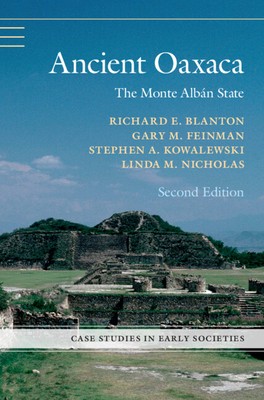
- We will send in 10–14 business days.
- Author: Richard E Blanton
- Publisher: Cambridge University Press
- ISBN-10: 1108830978
- ISBN-13: 9781108830973
- Format: 15.2 x 22.9 x 1.5 cm, kieti viršeliai
- Language: English
- SAVE -10% with code: EXTRA
Reviews
Description
Over two thousand years ago, Oaxaca, Mexico, was the site of one of the New World's earliest episodes of primary state formation and urbanism, and today it is one of the world's archaeologically best-studied regions. This volume, which thoroughly revises and updates the first edition, provides a highly readable yet comprehensive path to acquaint readers with one of the earliest and best-known examples of Native American state formation and its consequences as seen from the perspectives of urbanism, technology, demography, commerce, households, and religion and ritual. Written by prominent archaeological researchers who have devoted decades to Oaxacan research and to the development of suitable social theory, the book places ancient Oaxaca within the context of the history of ideas that have addressed the causes and consequences of social evolutionary change. It also critically evaluates the potential applicability of more recent thinking about state building grounded in collective action and related theories.
EXTRA 10 % discount with code: EXTRA
The promotion ends in 23d.04:04:42
The discount code is valid when purchasing from 10 €. Discounts do not stack.
- Author: Richard E Blanton
- Publisher: Cambridge University Press
- ISBN-10: 1108830978
- ISBN-13: 9781108830973
- Format: 15.2 x 22.9 x 1.5 cm, kieti viršeliai
- Language: English English
Over two thousand years ago, Oaxaca, Mexico, was the site of one of the New World's earliest episodes of primary state formation and urbanism, and today it is one of the world's archaeologically best-studied regions. This volume, which thoroughly revises and updates the first edition, provides a highly readable yet comprehensive path to acquaint readers with one of the earliest and best-known examples of Native American state formation and its consequences as seen from the perspectives of urbanism, technology, demography, commerce, households, and religion and ritual. Written by prominent archaeological researchers who have devoted decades to Oaxacan research and to the development of suitable social theory, the book places ancient Oaxaca within the context of the history of ideas that have addressed the causes and consequences of social evolutionary change. It also critically evaluates the potential applicability of more recent thinking about state building grounded in collective action and related theories.


Reviews